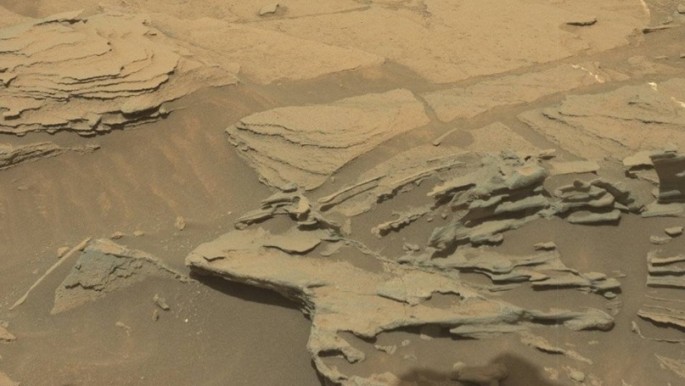A startling, new image was captured by NASA's Curiosity rover on Mars that provides an unprecedented view of fascinating Martian rock formations on the surface of the neighboring alien world that involves a "spoon".
Many conspiracy enthusiasts have already spotted "human faces", "rats", "elephants" and even "yetis" on Mars however this newest image from Curiosity presents another interesting case of pareidolia on Mars.
This latest image was taken by Curiosity rover's Mastcam during sol 1089 of the mission last August 30. Upon closer inspection, there seems to be a floating spoon, above some layer of surface rock formations. Since there is no trace of advanced civilizations on Mars that is capable of creating or manufacturing this spoon, there is still a logical answer to this.
Seeing or spotting familiar faces, creatures or objects is often known as pareidolia where this psychological event occurs when our brains translate this random visual stimulus as a familiar object or pattern. Mars is a favorite playground of space pareidolia sightings and its most famous one is the "Face of Mars" where a mesa located in the Cydonia region of the Red Planet was mistaken for a human face from images taken by NASA's Viking probes in the 1970s.
Today, high resolution camera technology is available in orbit and on the surface of Mars, where it was already proven that this ghostly face is just shadows playing tricks on our brains. As the Curiosity rover transmits numerous high resolution images straight from the Martian surface that consist of bizarre rock formations and interesting surface textures, this can trigger a serious case of pareidolia and many more conspiracy theories.
In this case however, there seems what appears to be a floating spoon that is protruding out of Martian rock, showcasing a great specimen of pareidolia and also provides a peek into the uncanny geological formations of Martian environment.
This unique "floating spoon" geological formation is caused by thin Martian atmosphere and weak gravitational forces where erosion processes are not so common as Martian wind can create more intricate structures as opposed to here on Earth. This wind action on Mars or also called aeolean processes dominate the alien planet, that produce small dust devils and even planet wide dust storms. This wind activity also creates vast dune fields and valleys including tiny arches and overhangs such as this "spoon".



























